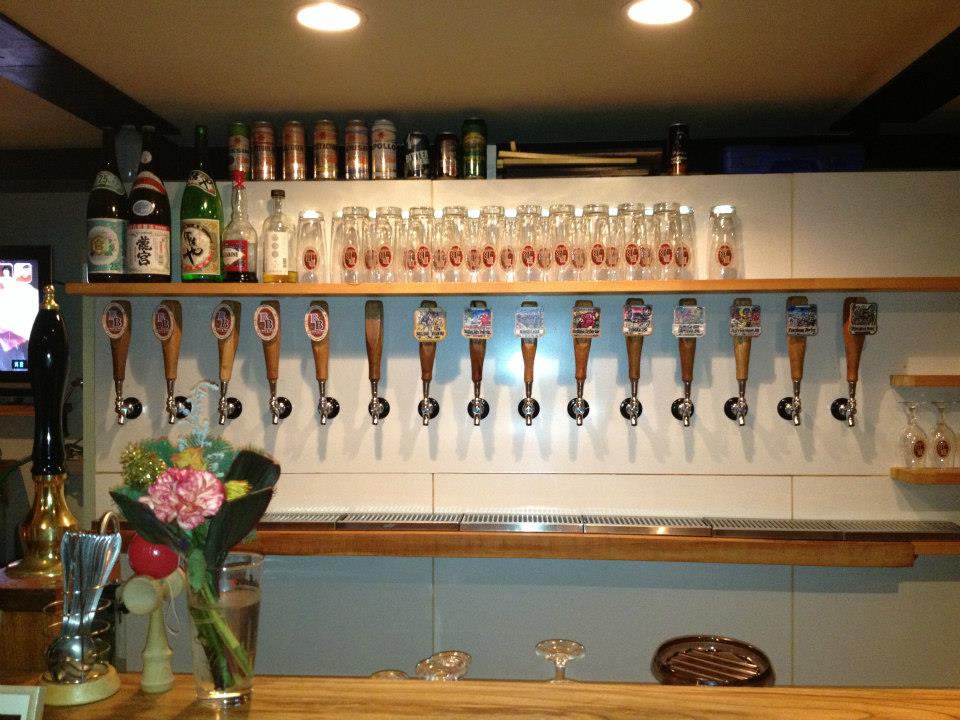Tokyo is a big city in Japan full of experiences to be had. With so many options ranging from fashion to culture to nature to cuisine, it can be hard to decide exactly what to put on your itinerary, especially if you only have a short amount of time.
Vagabondish is reader-supported. When you buy through links on our site, we may earn a small affiliate commission. Read our disclosure.
To help you plan the perfect weekend that will give you a taste of everything, here is how we recommend spending 36 hours in Tokyo. But on top of it, get yourself a fully supported Japan Sim Card before you go to keep you stay active online. You’ll want to travel with peace of mind knowing you’re connected no matter where your plans take you, so you can even buy a Simify eSim where you can connect without the need to swap out your physical SIM card.
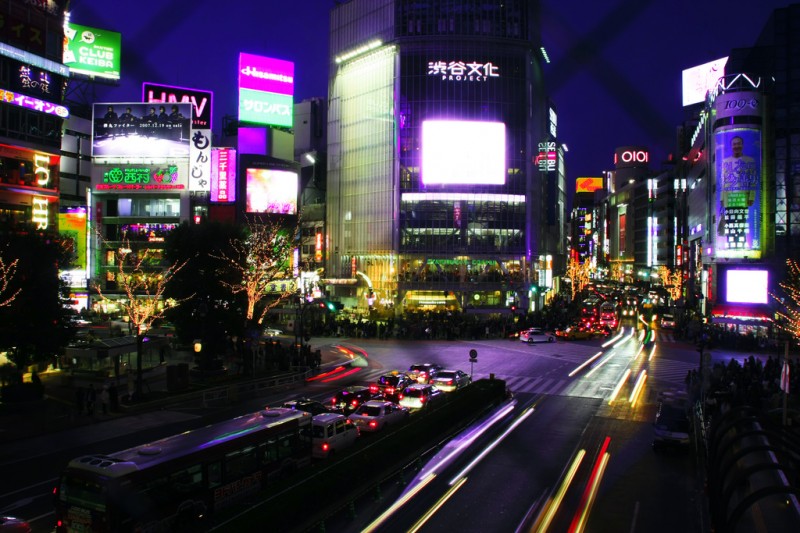
Night in Shibuya, Tokyo © Toshihiro Oimatsu
Getting There
Recently, American Airlines began offering nonstop service from New York’s JFK airport to Haneda Airport in Tokyo, making them the only airline carrier to operate this service. This is in conjunction with their already existing service to Tokyo (Narita Airport) from Dallas, Los Angeles and Chicago.
In addition, customers can fly with oneworld alliance partner Japan Airlines, to Tokyo (Narita) from Chicago, Boston, Los Angeles, San Diego, Honolulu and Vancouver and to Tokyo (Haneda) from San Francisco. Japan Airlines operates the luxurious 787 Dreamliner on its Boston-Narita and San Diego-Narita routes.
On your American Airlines flight, get a taste of local flavor through international and Japanese libations like Gekkeikan Horin Daiginjo Sake and Choya Umeshu Plum Liqueur. There are also celebrity chef-created menus by chefs Richard Sandoval, Nancy Brussat and Sam Choy featuring items like the Edo-style bento box, Mango Mojo pork tenderloin served with long grain rice and asparagus spears, a Pulehu beef fillet with shiitake mushroom cream sauce, sautéed vegetables and mashed potatoes and a wasabi-salmon with shiitake butter orzo, which you can make at home by clicking here.
Tours
Be aware that if you don’t speak Japanese you may have trouble communicating with locals. If you’d be more comfortable with a guide, we recommend Shinji Nohara, the Tokyo Fixer. You can tell him your interests and let him guide you, or give him an itinerary and he’ll lead you around giving you interesting background information and translating. If you want proof he’s legit, just ask Anthony Bourdain, who has employed his services numerous times when visiting Tokyo.
Stay at the Shangri-La Hotel
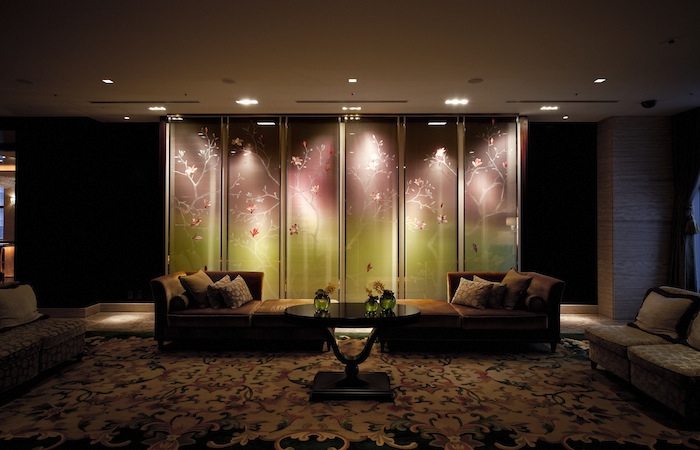
Artwork at the Shangri-La Hotel, Tokyo
For a mix of grand luxury and cultural touches, The Shangri-La Hotel is your best bet. Located in Chiyoda, the property is within walking distance of the Ginza shopping district, the Imperial Gardens, the business and retail zone of Marunouchi and the historical and cultural hub of Nihonbashi and Tokyo Station, giving you direct and convenient access to anywhere in Japan.
Their rooms start on the 31st floor and feature wall-to-wall windows allowing for an aerial view of the city skyline. Whether you opt for the standard Deluxe or the over-the-top Presidential Suite, you’ll have a spacious room showcasing traditional Japanese touches with a modern twist.
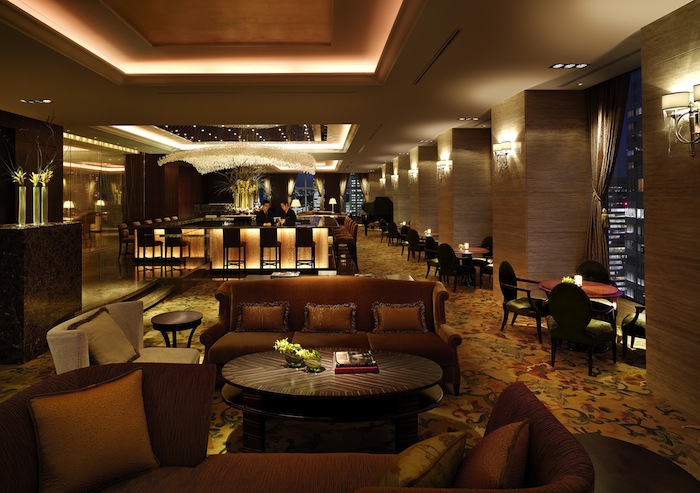
Lobby of the Shangri-La Hotel, Tokyo
In common areas, a grand staircase, elegant chandeliers, bold carpets, plush couches and grand pianos give the property a grand shine, while over 2,000 pieces of artwork, local cuisine and classic cocktails in their Lobby Lounge add a local touch. Their most impressive combination of luxury and culture can be seen in the chandelier illuminating The Lobby Lounge bar, each piece of glass intricately shaped into Tokyo’s signature ginko leaf.
Stop in their upscale Japanese kaiseki restaurant, Nadaman, for perfectly prepared dishes like fresh market shashimi, a variety of sushi and their decadent fois gras egg custard with truffle sauce. For some relaxation, the spa offers treatments based on ancient Chinese and Japanese healing practices as well as exclusive options available only in Tokyo like the Kisetsu Ritual and the Yang CHI Energiser.
Day 1
7:30am / Enjoy Breakfast @ at Shangri-La Tokyo
Choose between either an American or Japanese breakfast and enjoy the colorful continental buffet, full of fresh fruits, yogurts, cereals, nuts, juices, pastries, cheeses, breads and traditional Japanese items. Sit near the window for a view of Mount Fuji.
9:30am / Head to the Fish Market
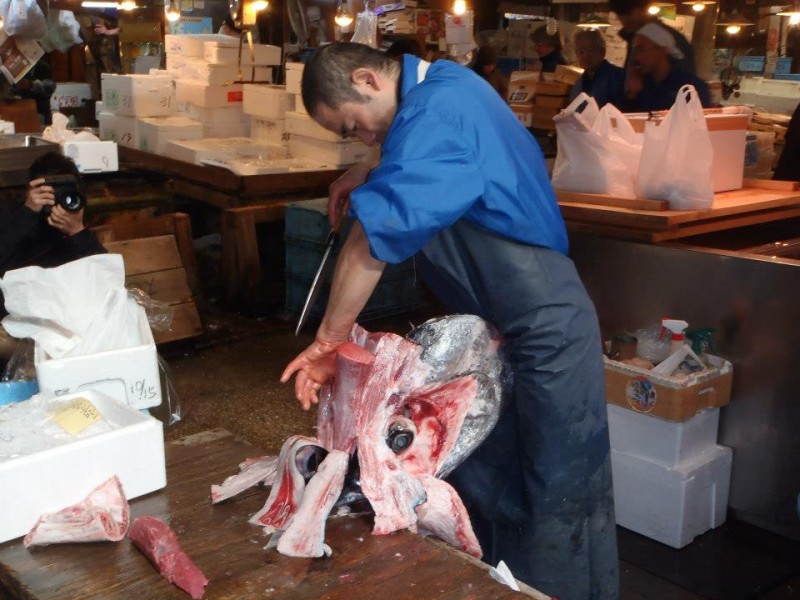
Tsukiji Fish Market, Tokyo, Japan
Called Tsukiji Market by locals, this expansive seafood market has resided in this location since 1924 and showcases the fresh catch of the day as well as crustaceans like scallops, oysters, clams, crabs, lobsters and more. There are even snapping turtles (so watch your fingers!).
The most interesting site is watching the fisherman cut up the giant tuna- some of which go for $10,000 whole. It’s bustling, chaotic and a great way to catch a glimpse of local life. Note: There will be blood and guts everywhere, so closed-toed shoes are recommended.
11am / Lunch
Afterward, stroll the outlining area of seafood eateries and retail shops. For the freshest sushi you’ve ever tasted head to Sushi Dai. While there is an English menu there is no outdoor sign in English, so ask a local to show you where it is. They serve fresh, single line-caught wild fish, meaning it’s of a much higher quality than the other sellers. If you want to find your own eatery but want quality, watch where the fishermen from the market go to eat their lunch.
Budget bite: Walk toward Ginza down Tsukiji 4 and stop at Jugetsudo for free samples of green tea and green tea cake, as well as to admire the many unique blends.
1pm / Shopping
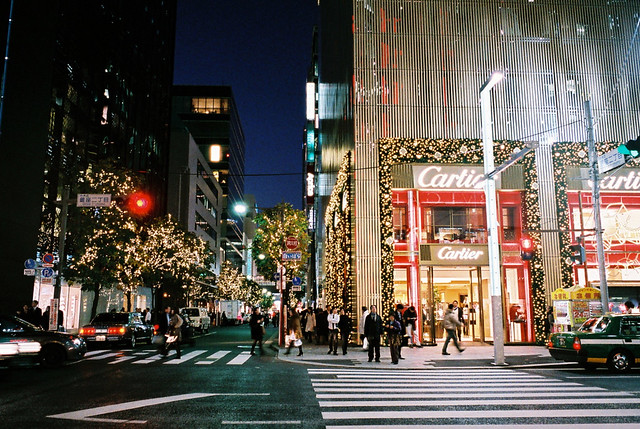
Ginza District, Tokyo © Jun Takeuchi
Walk a couple blocks up to the main hub of the city, Ginza. It’s an area filled with high end shopping and department stores, so you can check out what’s in-style in Tokyo. Bring some rare pieces, window shop or just people watch to see what the locals are wearing.
3pm / Fashion & Culture
Hop on the subway and get off at Harajuku Station. You’ll be at Omote-sando, the main street of Tokyo which is equivalent to Rodeo Drive. You’ll see luxury shops like Louis Voiutton, Donna Karen, Burberry, Christian Dior and more. On nearby streets you’ll also see locals wearing colorful and eccentric harajuko fashions inspired by anime characters.
Make sure to visit the Meiji Jingu Shrine, only steps away from the station. Walk through the peaceful Yoyogi Park and head to the Main Shrine. Before entering, wash your hands and mouth with the water at the gate to metaphorically (and literally) cleanse yourself.
Meiji Jingu is a Shinto shrine, rooted in Japanese heritage as it’s Japan’s ancient original religion. In harmony with nature and moral virtues, the site is a place of peace, spiritual offering and remembrance of Emperor Meiji and his consort Empress Shoken. The 122nd emperor of Japan, Meiji came to power in 1867 and not only promoted friendly relations with other countries, but also paved the way for modern Japan by introducing Western elements and technology while still keeping Japanese culture intact. Additionally, Empress Shoken was a woman who dedicated herself to the country’s welfare, women’s education and world affairs.
Before leaving, make sure to stroll through the Meiji Jingu Gardens to explore local flora and a beautiful fishing pond.
6p / Dinner
Often called the Champs-Elysees of Tokyo, you’ll have no trouble finding a good place to eat on Omote-sando and nearby. For something authentic head to Kyushu Jangara Ramen right near Harajuku Station at 1-13-21 Jingu-mae, where you can get a heaping bowl of slurpalicious ramen for about 700 to 1,000 yen (about $8.50 to $10). It’s an open kitchen, so you can watch the chef prepare your meal. There is an English menu so you can easily choose your toppings, some of which include boiled egg, bamboo shoots, stewed pork, mentaiko (spicy cod roe) and green onion.
8p / Explore Japan’s Microbrew Scene
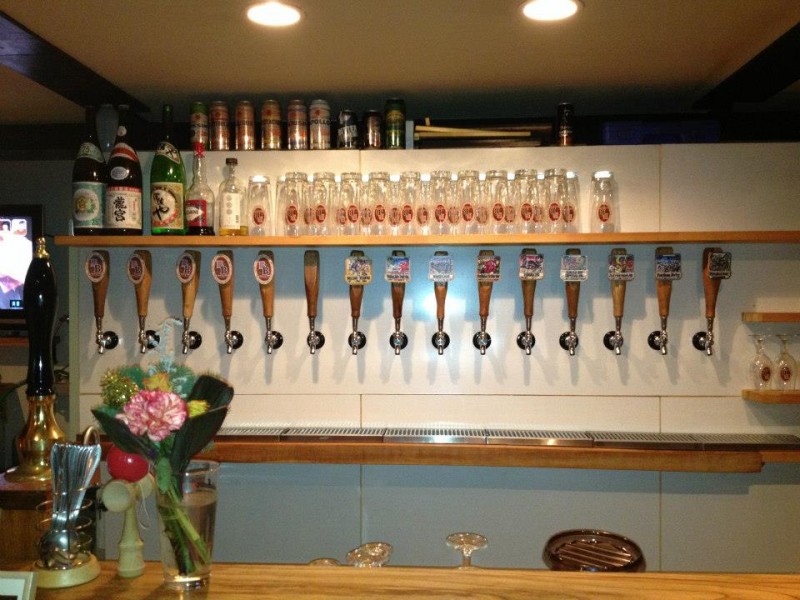
Baird Brewing Company, Tokyo, Japan
Baird Brewing Company makes their own beers at the Harajuku Taproom, serving microbrews by the glass or in a 3-brew sampler for 1,000 yen (about $12). They are a family company with the motto of celebrating beer, which refers to “the comprehensive enjoyment of beer in a way that enhances the overall experience of life.”
Try their Single-Take Session, which is spicy and playfully effervescent with a slightly bitter end, their Rising Sun Pale Ale, a brisk brew with a citrus hop flavor, or their Suruga Bay Imperial IPA a creamy beer described as a “fireworks like festival of hops.”
They also serve Japanese beer bites like sautéed vegetable, Korean-style tofu and sweet potato tempura.
Day 2
7a / Enjoy Breakfast @ at Shangri-La Tokyo
Wake up early and enjoy another hearty breakfast at the Shangri-La Tokyo. If you had a little too much beer last night, soak up the alcohol with their hearty omelets, fresh bread or creamy quiches.
8a / Watch Sumo Practice
In the area of Ryogoku, you’ll find a hub of sumo-related attractions like the main Kokugikan sumo stadium, sumo stables and chanko restaurants owned by retired sumo wrestlers. With advance notice you can watch sumo wrestlers practice their skills at one of the many sumo stables (beya), like Arashio, Izutsu and Minezaki. Ask your guide or hotel to book this for you at least a day in advance.
There is also a worthwhile cultural museum nearby called the Edo-Tokyo Museum, which is walking distance from the stadium. If you’re lucky enough to be in Tokyo during January, May or September you may also be able to catch one of the three major annual tournaments.
Noon / Grab Some Chankonabe For Lunch
In the spirit of sumo, opt for some chankonabe, a protein-rich Japanese stew eaten in large quantities by sumo wrestlers to gain weight. Don’t worry, it’s actually a healthy dish assuming you eat a normal serving and cut back on the beer, which sumo wrestlers pair with their meal to increase calories.
2p / Experience a Traditional Tea Ceremony @ Happo-En
Happo-En (“flowers of the garden”) is a traditional yet informal tea garden where you can go in casual clothes, stay as short or as long as you’d like and enjoy a traditional Japanese tea ceremony in a beautiful setting. Roam the onsite gardens beforehand, admiring the tall Japanese maples, ancient bonsai trees and colorful coy pond.
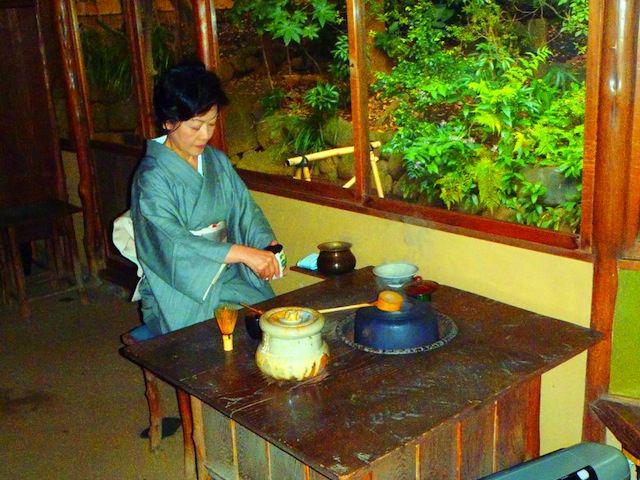
Traditional Tea Ceremony at Happo-en
Inside the cozy tea house, you’ll watch trained tea hosts beautifully prepare high-quality green teas. The first focus of the tea ceremony is the welcoming of the guests, which should be done appropriately for the season. The decor and ambiance of the space should reflect the season, as should the way the tea host, or Teishu, makes the guest feel. Moreover, the grace and beauty with which the Teishu prepares the tea is also important, and should be done in a very specific manner. Once your tea is served, you’ll learn to admire the cup as well as the anti-oxidant rich beverage.
3p / Experience a Japanese Onsen
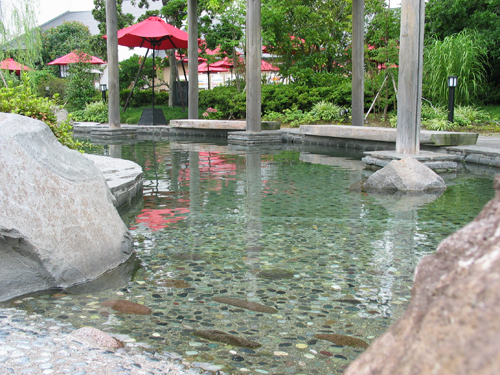
Foot Bath at Ooedo-Onsen-Monogatari
At Ooedo Onsen Monogatari, you can take a bath in 100% natural spring water. Located near Telecom Center Station and Tokyo Teleport Station off the metro, the park opened in 2003 as the city’s first and only hot springs theme park. You’ll find baths of all different types, indoor, outdoor, foot baths, ancient baths, private baths, group baths, bubble baths and more. Afterward, enjoy activities like fortune telling, blowgun darts, massages and live entertainment.
7p / Take a Stroll Through Electric City
Akihabara, or Electric City, is an energetic hub of electronics and technology. Even if you don’t want to buy anything, it’s a great way to immerse yourself in the impressive technologically savvy culture that Japan embodies. You’ll also be able to catch a glimpse of products not yet on the market. It’s especially fun to visit after dark when it’s all lit up and the streets are still full of people.
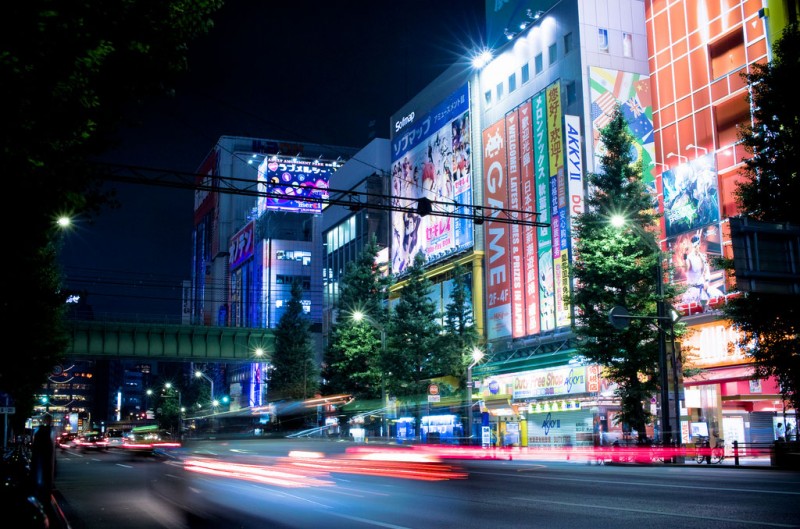
Akihabara by Night, Tokyo, Japan © Guwashi999
9p / Get to Know Tokyo’s Typical Cuisine & Speakeasy Culture
Head to the Kagurazaka area and explore hidden alleys showcasing tiny mom and pop restaurants and bars with no signs. Pop into one of the small eateries and order something off the menu in Japanese for an authentic surprise.
Once you’re full, it’s time for drinks. Geishas greet you at hidden speakeasies making classic cocktails for those who can find the location. Unlike many other cities where speakeasies quickly become public knowledge, many of Tokyo’s underground bars aren’t even known by locals. That being said, I was asked by Shinji, my Tokyo Fixer guide, to keep the name of the venue we went to secret. Yes, that’s how much the locals care about the speakeasy culture. Just know the vibe is low-key, the drinks are classic and you’ll get to see a lesser-known side of the city.


